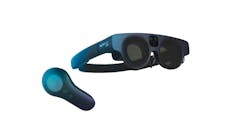The global economy has caused an increase in worldwide competition. Because of this, vehicle component suppliers can no longer manufacture a component focused on a single market. The level of interoperability required to meet the needs of multiple markets and OEMs cannot be achieved without standards.
A standard is an agreement among stakeholders to serve a larger purpose. While the "give and take" can be lengthy and uncertain, standards provide a high degree of certainty that the best solution will be adopted.
There are several standards bodies in our industry: Society of Automotive Engineers (SAE), Technology and Maintenance Council (TMC) of the American Trucking Associations (ATA) and International Standards Organization (ISO), to name a few.
Legislation Forces Standards Adoption
In the 1990s, the U.S. Environmental Protection Agency (EPA) and the California Air Resources Board (CARB) began instituting environmental requirements for vehicles. Reducing emissions was the first facet; the second was On-Board Diagnostics (OBD).
OBD focused on the use of generic hardware devices to ensure the emissions control devices were meeting regulations. Europe soon implemented its own set of standards, called European OBD (EOBD).
This legislation brought component manufacturers together to develop standards for networking of active vehicle components, as well as providing access to various vehicle parameters and emissions-related data. Some of the standards used today include:
- ISO 15765-4 - Diagnostics on CAN (controller area network) for emissions related components.
- SAE J1962 - OBD Diagnostic Connector.
- SAE J1979 - Diagnostic Message Structure.
- SAE J2012 - Diagnostic Trouble Code (DTC) Definitions.
- SAE J1930 - Terms & Conditions.
Mandated Off-Board Standards
- ISO 15765 - Over the years, new emissions requirements forced the industry to look at faster alternatives. CAN was the obvious choice and was adopted as ISO 15765 (Diagnostics on CAN [DoCAN]). The current mandate, OBDII, requires CAN on all 2008 and newer automobiles in the United States.
- SAE J2534 - Along with ISO 15765-4, EPA/CARB also mandated a specific PC Application Programming Interface (API) called SAE J2534. This was so OEMs could write reprogramming software allowing independent repair facilities to use off-the-shelf hardware to reprogram electronic control units. This eliminated the need for shops to buy proprietary hardware for every vehicle manufacturer or to send the vehicle to a dealership.
- SAE J1939/TMC RP1210 - When Heavy Duty OBD (HD-OBD) was legislated, J1939 was the obvious choice. The J1939 committee was easily able to plumb all emissions compliance testing and parameters into the standard. An API was the only area not discussed, and CARB/EPA settled on TMC RP1210 since the majority of suppliers were already using it for their diagnostic applications.
For light duty vehicles, ISO 15765 and SAE J2534 must be implemented. For heavy duty, an OEM can choose either ISO 15765 and J2534, or SAE J1939 and TMC RP1210.
Toward Global Harmonization
The great thing about standards is that there are so many to choose from. EPA and CARB have been driving emissions reductions in the U.S., while Europe took its own path with two standards called Euro5 and Euro6.
There is a concerted effort to harmonize the SAE and the respective ISO standards for the global market. The question is how do we get there? The answer is called World Wide Harmonized (WWH) and is documented in ISO 27145. It not only includes CAN/ISO 15765, but also includes a potential network, well known, but new, to in-vehicle use: Ethernet.
As the industry works toward WWH-OBD, the number of active nodes on a vehicle now exceeds 100, making networking speed matter even more. There are several technologies that are being used or developed for vehicle application, namely:
- SAE J1939 will double in speed from 250 to 500 Kbps (Kilobits of data transfer per second).
- FlexRay - a high-performance network that supports time or event triggered events with redundancy and fault tolerance at speeds to 10 Mbps (Megabits of data transfer per second).
- The use of Ethernet as an in-vehicle network with a range of speeds from 10 Mbps (millions of bits per second) to 100 Gbps (billions of bits per second).
Both automotive and heavy duty engineers are looking at a new CAN standard developed by Bosch called CAN with Flexible Data Rate (CAN-FD). Here, the basics of CAN remain the same, such as the vehicle wiring, however, the data throughput can be increased to an effective speed of 1.5 to 12 Mbps.
CAN-FD interoperates with CAN, and could easily be added to existing SAE or ISO standards, including WWH.
We will see significant advances in vehicle network technology in the very near future, like faster networking (CAN-FD, Ethernet and FlexRay), vehicle-to-vehicle communications (V2V), vehicle-to-infrastructure communications (V2I), as well as other safety and security-related components.
The best thing for the OEM, component manufacturer or diagnostics and maintenance for consumers is that most of these proposed changes already have an SAE or ISO standards committee looking at how to best support new functionality, interoperability and diagnostics in a global standard.
Mark Zachos is president and founder of DG Technologies - a vehicle network solutions company with a quarter rcentury of offering diagnostics, re-programming, engineering tools, consulting and training in support of vehicle networks. www.dgtech.com. DG Technologies chairs and participates on numerous SAE, ATA, TMC and ISO committees, and Zachos serves on the board of directors of SAE International.




